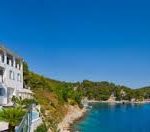Croatia’s luxury villas and castles do not attract as many investors as they should.
Potential investors and buyers of top real estate could be attracted to Croatia by its cultural and culinary excellence, organisation of important international events, and simplified buying procedures, reports Jutarnji List on May 18, 2017.
The start of luxury tourism in Europe took place around 1830 when British aristocracy began buying houses on the French Riviera. Saint Tropez, which is today most often perceived as a destination for the vacation of members of the elite, flourished only after 1956, thanks to the film “And God Created Woman” that was shot there starring Brigitte Bardot, which made the town globally popular.
In the 1980s and 1990s, Chianti wine popularised Tuscany among people who wanted more luxurious holidays. Also, thanks to their exclusive facilities, Quinta do Lago in Portugal and Ibiza also started attracting attention.
Although Austrian-Hungarian Emperor Franz Joseph spent his holidays in Opatija as early as in 1887, Croatia did not take advantage of its potential and has lost decades of development and branding in the luxury tourism sector. Low investment rates were also a consequence of the fears of investors due to Croatia having a former socialist economy and the Homeland War.
“A more favourable period for Croatia took place between 2003 and 2008, when investors recognised a satisfactory ratio between the money invested and the value gained, but everything than stopped due to the global economic crisis. The modest, but steady growth of investments in luxury tourism in Croatia has been recorded again since 2013, but we are still far behind Europe,” said Jelena Cvjetković, from the Savills real estate agency, during her lecture on “Tourism – luxury villas and castles”, held as part of the 13th Annual International Conference on Real Estate Development, organised by the Filipović business consultancy.
According to the agency, luxury properties in Europe are generally bought by people aged between 50 and 59 years. If you look at who is purchasing real estate worth more than 2 million euros, the second place belongs to the group of people between the ages of 60 and 69, while with the real estate below 2 million euros, the second place belongs to buyers between 40 and 49 years old.
Luxury properties are most often bought as holiday homes, followed by those buying them for regular housing or occasional rentals, while they are rarely used solely for rentals and as a source of additional earnings.
The group of properties worth more than 2 million euros is dominated by apartments and detached houses with an area of at least 200 square metres, and with an average area of between 400 and 500 square metres. In the group of properties of less than 2 million euros, as much as 59 percent are apartments.
In addition to the proximity of the sea, beaches or mountains and privacy, security and political stability, luxury property buyers are also attracted to places where major conferences, festivals, parties, entertainment events, award ceremonies and car shows are held.
“Croatia is currently being perceived as a country that offers a satisfactory ratio of money invested and value gained, with a leisured lifestyle, numerous islands and partying, which is very similar to Ibiza’s dynamics. What Croatia can do to attract luxury home buyers is to begin offering such accommodation for rentals, which can lead to sales. Then, it is important to work on cultural and culinary excellence, as well as on the good representation of historical sites, encourage organization of important international events, as well as investment and development, while the process of buying the real estate should be as simple as possible”, says the Savills agency.
Although Croatia abounds in castles, manors, forts, summer houses and villas with great potential for the development of luxury tourism, especially in the Hrvatsko Zagorje and Dubrovnik areas, the current situation is quite worrying.
“The tradition of building castles on Croatian soil is 2,000 years old. Today we have about 1,000 castles of various kinds, but only 12% of them are in excellent condition and most of them are museums. Examples are Trakošćan and Veliki Tabor, then Lužnica, which was renovated by the nuns, and the Bračak castle, which after the renovation became the Regional Energy Centre. About 43 percent of castles are in relatively good condition, while 45 percent are dilapidated,” says Mladen Obad Šćitaroci from the Faculty of Architecture in Zagreb.
He added that half of all castles in Croatia currently have an acceptable purpose, while 37 percent are being used in an unsatisfactory manner. The main reasons for slow reconstruction and conversion of castles are lack of projects and investors.








